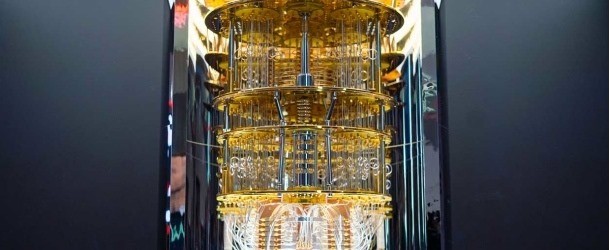Q-CTRL’s Hush: Quantum computing ecosystem will continue to expand in 2023

Just a few years ago, the quantum computing ecosystem was dominated by just few very large players, namely IBM, Google and Microsoft (at least in the U.S.). Though the long-term financial health of some quantum start-ups remains in question, it is clear the market is becoming more diverse, to the great benefit of users who want to explore their options.
The market expansion only will continue in 2023, according to Dr. Michael Hush, Q-CTRL Chief Scientific Officer at Q-CTRL, who shared with IQT News some predictions for what to expect from the sector in the year to come.
“2023 will be a year of dramatically increased diversity in the ecosystem of quantum hardware providers,” he said. “IBM has had an out-sized market share by being a pioneering early mover, but new machines from alternate providers appearing on services like AWS Braket and Microsoft Azure Quantum may start to change this dynamic.”
Hush said we should expect to see “a flurry of new commercially available machines leveraging different hardware systems – photonics, diamond, new superconducting circuits, neutral atoms. With this expansion will come enhanced awareness of novel operating regimes – from measurement-based and circuit machines to analog quantum simulators.”
Quantum sensors could be another part of the quantum technology sector that sees movement in 2023, with quantum sensing technology moving out of labs and into real world environments. That will be a good thing for quantum technology companies looking for some near-term revenue opportunities while other quantum technologies continue to mature. Q-CTRL is one of several companies that ramped up investment recently in quantum sensing.
“This technology [quantum sensors] is maturing rapidly and provides a high-value near-term opportunity that aligns with key strategic and defense needs,” Hush said. “Q-CTRL is active in this area and will be a key participant through our focus on quantum sensors enabled by software. These demonstrations will coincide with expanded end-user interest and engagement, leading vendors to shift narratives to the problems being solved, and away from the underlying technology.”
And while the quantum technology sector, like many industries, may have seen less investment moving in its direction of late, Hush suggested that investment could return in a more focused way. “Ongoing macroeconomic conditions will likely shift capital towards quantum companies that can deliver real value today, rather than bets made exclusively on long term potential,” he said. “Tighter funding conditions will slow new-company establishment and may force some companies without sufficient capital reserves to disband or aggressively seek acquisition. We expect this to be particularly pronounced in areas where growth was most rapid due to low barriers to entry and competitive differentiation was lacking – applications consulting and quantum algorithm design.”
But he added that technology improvement and innovation will continue. “We will continue to see huge strides in QC performance and value delivery to end users. This starts with growth of hardware system size and improvement of base error rates. It will be augmented by new infrastructure software capabilities that allow end-users to push hardware to intrinsic limits, and we will likely see the first unambiguous ‘beyond break even’ demonstration of quantum error correction. In combination these three advances – hardware-level innovation, quantum control infrastructure software, and quantum error correction – will put us on a fast track to establishing QC as a viable and useful computational tool in the mass market.”
Dan O’Shea has covered telecommunications and related topics including semiconductors, sensors, retail systems, digital payments and quantum computing/technology for over 25 years.



















